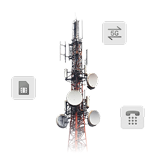Understanding SOA and API-Led Connectivity
What is Service-Oriented Architecture (SOA)?
Service-Oriented Architecture (SOA) is a software design framework that enables applications to communicate with each other through services. These services are typically reusable, modular, and interoperable, making SOA ideal for large-scale enterprise integration. SOA relies on protocols like SOAP (Simple Object Access Protocol) to facilitate communication between services.
Key Characteristics of SOA:
- Reusability
Services are designed to be reused across multiple applications, reducing redundancy. - Interoperability
SOA enables communication between heterogeneous systems, regardless of their underlying technologies. - Centralized Governance
SOA implementations often require a centralized governance model to manage services effectively.
However, SOA has its limitations. Its monolithic nature can make it rigid and difficult to adapt to rapidly changing business needs. Additionally, the complexity of governance and the reliance on heavyweight protocols like SOAP can slow down development cycles.
What is API-Led Connectivity?
API-led connectivity is a modern, modular approach to integration that leverages RESTful APIs (Application Programming Interfaces) to connect systems, applications, and data sources. Unlike SOA, which relies on monolithic service layers, API-led connectivity structures integration into three distinct layers:
- System APIs:
These APIs connect core systems like ERPs, CRMs, and databases, abstracting the underlying complexity and providing a standardized interface. - Process APIs:
These APIs orchestrate business logic by combining data and functionality from multiple System APIs. - Experience APIs:
These APIs deliver data in a format tailored to specific user experiences, such as mobile apps or web portals.
Key Advantages of API-Led Connectivity:
- Modularity:
APIs are designed to be modular, making it easier to update or replace individual components without disrupting the entire system. - Agility:
The layered approach enables faster development and deployment of new features. - Scalability:
APIs can be scaled independently, allowing businesses to handle increased loads without over-provisioning resources. - Cloud-Native Compatibility:
API-led connectivity is inherently compatible with cloud environments, making it ideal for modern, distributed architectures.
The Shift from SOA to Microservices
The transition from SOA to a microservices architecture is a natural evolution driven by the need for more flexible, cloud-native applications. Microservices break down applications into smaller, independent services that communicate through lightweight APIs. This approach offers several advantages over traditional SOA:
Why Are Businesses Moving from SOA to Microservices?
- Scalability:
Microservices allow businesses to scale individual services independently, optimizing resource utilization. - Faster Development Cycles:
Teams can develop, test, and deploy microservices independently, reducing time-to-market. - Improved Fault Isolation:
Failures in one microservice do not impact the entire system, enhancing reliability. - Cloud-Native Compatibility:
Microservices are designed to work seamlessly with modern cloud environments, enabling businesses to leverage the full potential of the cloud.
API-led connectivity plays a crucial role in the adoption of microservices by providing a lightweight, flexible framework for connecting services without the overhead of traditional SOA governance.
Leveraging Modern iPaaS Tools for Seamless Integration
To manage the complexity of modern integrations, businesses are increasingly adopting Integration Platform as a Service (iPaaS) solutions. iPaaS platforms provide a cloud-based environment for building, deploying, and managing integrations, offering pre-built connectors, low-code development tools, and centralized monitoring capabilities.
Key Benefits of iPaaS for API-Led Connectivity:
- Faster Integration Deployment:
iPaaS eliminates the need for extensive coding or infrastructure setup, enabling businesses to deploy integrations quickly. - Real-Time Data Synchronization:
iPaaS ensures that data is synchronized across systems in real-time, improving decision-making and operational efficiency. - Enhanced Security and Compliance:
iPaaS platforms come with built-in governance, encryption, and compliance mechanisms, ensuring data integrity and security. - AI-Powered Automation:
Many iPaaS solutions leverage AI to automate repetitive tasks, reducing manual effort and improving efficiency.
Popular iPaaS tools like MuleSoft, Boomi, and Frends have become essential for businesses looking to implement API-first integrations with minimal effort. These platforms simplify the transition from SOA to a modern, agile architecture, enabling businesses to stay competitive in a rapidly evolving digital landscape.
Tellestia’s Expertise in SOA and API-Led Integration
At Tellestia, we specialize in helping businesses navigate the complexities of enterprise integration. Whether you’re looking to optimize an existing SOA framework or adopt a fully API-led architecture, our team of experts ensures a seamless transition.
How Tellestia Supports Integration Transformation:
- SOA Optimization:
We streamline existing SOA frameworks to improve efficiency, scalability, and adaptability. - API-Led Connectivity:
We design and implement RESTful API integrations that enhance agility, performance, and interoperability. - Microservices Transition:
We help businesses migrate from SOA to microservices with minimal disruption, ensuring a smooth transition to a modern architecture. - iPaaS Solutions:
We deploy leading iPaaS tools to accelerate integration deployment and improve system connectivity. - Security and Compliance:
We ensure data integrity and compliance with industry-standard security protocols, protecting your business from potential threats.
Our solutions empower businesses to unlock the full potential of their data, improve system interoperability, and accelerate digital transformation.
SOA vs. API-Led Connectivity: Which Approach is Right for Your Business?
The choice between SOA and API-led connectivity depends on your organization’s specific needs, existing infrastructure, and long-term goals. Here’s a quick comparison to help you decide:
| Aspect | SOA | API-Led Connectivity |
| Architecture | Monolithic | Modular and Layered |
| Scalability | Limited by monolithic design | Highly scalable |
| Development Speed | Slower due to complex governance | Faster due to modularity |
| Cloud Compatibility | Limited | Fully compatible |
| Use Case | Legacy systems and large enterprises | Modern, cloud-native environments |
While SOA remains relevant for legacy systems and large enterprises with complex integration needs, API-led connectivity is the future of enterprise integration. It enables seamless cloud adoption, microservices scalability, and real-time data exchange, making it the preferred choice for modern businesses.
Conclusion: Building a Future-Ready Integration Framework
As businesses strive for greater agility, efficiency, and innovation, the choice between SOA and API-led connectivity plays a crucial role in their digital strategy. While SOA has served as a reliable framework for decades, the rise of cloud computing and microservices has made API-led connectivity the modern standard for enterprise integration.
By leveraging modern iPaaS tools and partnering with experts like Tellestia, businesses can build a robust, future-ready integration framework that drives operational excellence and innovation. Whether you’re optimizing an existing SOA framework or adopting a fully API-led architecture, the key is to choose an approach that aligns with your business goals and enables seamless connectivity across your systems.
Ready to Modernize Your Enterprise Integration?
Contact us today to explore the best approach for your business and unlock the full potential of your data!






















